Video Storytelling Could be the Key to Bringing People Closer Together

Originating on opposite sides of the globe, about the only film “actor” who has been around longer than Godzilla is Dr. Who and both have ardent viewers in every country of the world.
We like the older Godzilla flicks because the creation is still fun (O.K., funny) to watch and the lip-sync sucks. We like the older segments of Dr. Who because the creation is humorous to watch, and their version of English is almost impossible to understand (and yes, we have the same issues with Aussie).
Okay that’s here at home; but when we’re in another country, say Germany, Japan or Mexico on business or pleasure, we enjoy going to a play or movie.
No, we’re not fluent in the languages. In Japanese and German, we know just enough phrases (we have to rehearse again and again before going), just enough to barely conduct business and get around. Spanish is so-so. By the time we’ve translated a scene, five minutes have passed, so we never really catch the dialogue.
But it’s fine because when the storyline is good, you can almost understand what people are saying.
Why?
Films–video stories of all types–appeal to, resonate with and can be understood by men, women, kids no matter if they’re in Lebanon, Lithuania, Laos or Louisiana.
So, with Netflix global creep into more than 190 countries Reed and team undoubtedly didn’t look at it as a major entry barrier when France, India and other countries said the global streaming service had to locally produce X percent of their content library in the specific country.
About the only folks who thought it would be a problem for them were investment analysts and the remnants of the Hollywood crowd.
They were sure doing stuff over there wouldn’t be “accepted” over here.
Wrong!
Take this year’s Oscars.
Alfonso Cuarón’s Roma not only walked off with a lot of recognition for Netflix (deservedly, he got a couple of Oscars for his work), but the film changed the ground rules for what is arguably the global industry’s major event and has forced the industry to give the rules a second look – OTT is just as good as a theater.
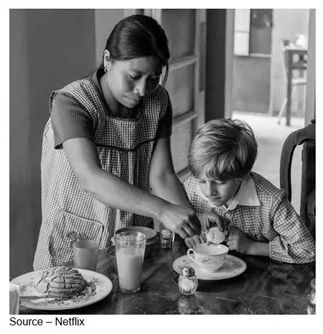 The highly personal 135-minute black-and-white homage to the woman who raised Alfonso Cuarón was classified as a foreign language film. If we happen to see it when we’re down in Mexico, we’ll see it as it was created; but at home, we’ll stream it with perfectly synced sound, thanks to the folks in Los Gatos.
The highly personal 135-minute black-and-white homage to the woman who raised Alfonso Cuarón was classified as a foreign language film. If we happen to see it when we’re down in Mexico, we’ll see it as it was created; but at home, we’ll stream it with perfectly synced sound, thanks to the folks in Los Gatos.
Even as filmmakers are delighted when Netflix puts their projects in front of millions of folks around the globe, there are elitist film festival/awards groups that say not watching a film in a theater but streamed to your home set or gawd forbid on your iPad or iPhone is heresy.
Yes, we like watching a good video story in the theater, but watching it on our 4K HDR screen in our pajamas seems just as good and we can hit pause when we have to leave the room.
We agree that watching on a smaller screen seems dumb for even short content; but hey…your choice.
Netflix’s reported $25M awards campaign for Roma to capture best picture didn’t produce the desired results (a lot of folks couldn’t figure out how/why Green Door earned the little statue). Still, the investment has paid off.
 ACSI (American Consumer Satisfaction Index) reported that Netflix scored 81 (out of 100) for its original content with HBO, Amazon Prime and Hulu earning accolades for their projects
ACSI (American Consumer Satisfaction Index) reported that Netflix scored 81 (out of 100) for its original content with HBO, Amazon Prime and Hulu earning accolades for their projects
Disney has been bringing all of its movies home in preparation for the launch of Disney+ later this year, which means Captain Marvel won’t be available to Netflix subscribers.
Of course, NBCUniversal, WarnerMedia and others are also planning their own DOC (direct-to-consumer) services, so their library titles may not be available to Netflix.
But Barry Diller, chairman of IAC and former CEO of several TV and movie studios, recently told Kara Switzer, editor-at-large at Recode, “Hollywood is now irrelevant. Netflix has won the streaming game. Short of some existential event; Netflix has the subscribers, giving them dominance. They can outbid and do.
“Disney is making a very big play because it’s Disney and has so much good content, Bob Iger is a superb executive and is a world player,” he noted, “but other than that, the movie companies play no larger role than making stuff.”
He added that Netflix has the global reach, the up-close-and-personal subscriber experience and the data algorithms to use, develop and deliver the content people want.
About the only place Netflix (190 countries total) doesn’t have viewers is China, which just so happens to have the largest potential audience on the planet, so you know they’re “talking.”
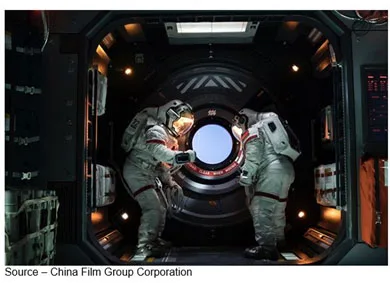 Viewing may not be a two-way street – yet; but Netflix knows good content when they see it.
Viewing may not be a two-way street – yet; but Netflix knows good content when they see it.
In fact, Netflix snapped up the biggest hit China has produced to date – The Wandering Earth. Of course, it’s a sure thing because it had already racked up $600M globally – surpassing any Hollywood blockbuster – which has historically been tough for a Chinese film. Since most are “managed” by the government, many have strong political undertones.
Sure, it might remind you a little of a mix of 2001: A Space Odyssey, Armageddon and maybe a touch of The Day After Tomorrow; but all good/great creative work is built on the past.
Most of the country’s films are produced in Hengdian World Studios (the Hollywood of China) under strict government oversight. And like any production area, they’ve faced their own scandals like paying taxes, salary caps and other real-life dramas within dramas.
 For the most part, the Chinese audience puts up with the stuff because it isn’t that bad and they know bad like every other movie viewer when they see some of the stuff pumped out by Hengdian, so government agencies are easing up … a little.
For the most part, the Chinese audience puts up with the stuff because it isn’t that bad and they know bad like every other movie viewer when they see some of the stuff pumped out by Hengdian, so government agencies are easing up … a little.
Take Dwayne “The Rock” Johnson’s Skyscraper, whch was produced by Legendary (owned by Chinese conglomerate Wanda), brought in $61M (vs. a budget of $125M) in the U.S. but racked up $180M globally thanks in no small part to his Chinese fans.
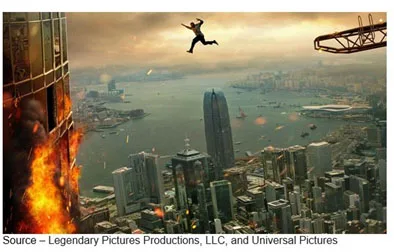 Despite the setbacks and the hurdles creatives have to overcome in the country, the ambitions and budgets in the Chinese film industry are steadily growing.
Despite the setbacks and the hurdles creatives have to overcome in the country, the ambitions and budgets in the Chinese film industry are steadily growing.
Increasingly Chinese filmmakers are working on projects that “lack” the government’s propaganda messages, looking for global appeal. The country may have a staggering 1.4B population or close to 20 percent of the world’s viewing population; but no shooter or producer is satisfied with “the hometown crowd.” They have their eyes set on more international-scale releases because while every filmmaker does this stuff to make money, they also want people to like and be touched by their work.
While Netflix works to add Chinese viewers to their growing subscriber list, they have already begun making strong inroads into the world’s second largest populated country – India with an estimated 1.35B population.
Few industry analysts give Hastings’ goal of 100M Indian subscribers much credence because of their premium subscription rate (roughly $3 per month). However, more than 100M Indians hit the theater three times a year to watch a Bollywood flick, so they might have a point … we’ll see.
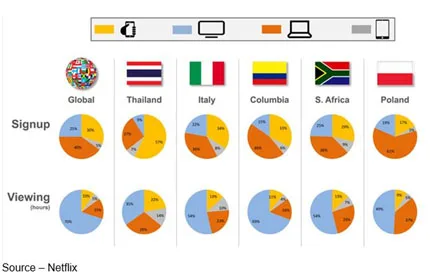 The Indian streaming market isn’t simple. It already has a lot of competition with AVOD (free, ad-supported) and a well-funded, solid library SVOD (subscription) OTT services.
The Indian streaming market isn’t simple. It already has a lot of competition with AVOD (free, ad-supported) and a well-funded, solid library SVOD (subscription) OTT services.
TV set penetration in India is currently about 64 percent whereas the APEC (Asia Pacific Economic Cooperation) region has an average of 85 percent. Industry analysts estimate the country is adding 25-30M new viewers a year.
Netflix currently has an estimated 1M Indian subscribers, so they have their work cut out for them, but they have released – or will soon release – 24 Indian originals.
 Even if you sat through all of the award presentations, it was pretty easy to miss another Netflix winner that the company purchased for the Indian and beyond market.
Even if you sat through all of the award presentations, it was pretty easy to miss another Netflix winner that the company purchased for the Indian and beyond market.
We admit that the subject matter of the short documentary didn’t make us want to stream it to our set. It’s an empowering story of Indian women manufacturing sanitary pads; but the brilliance of the title – Period. End of Sentence – absolutely blew us away once we understood what it meant. Brilliant, absolutely brilliant.
But the Rayka Zetacrit-directed short swept another Oscar for the streaming giant and was more proof they recognize great content when they see it.
Zehtabchi’s ability to capture the story of how receiving something as seemingly simple as a sanitary pad machine allowed women to learn to manufacture and market their own pads in addition to eliminating the stigma of menstruation, improving women’s and girls’ health and providing these females with new opportunities.
It’s a piece everyone, everywhere will find educational, enlightening and yes, empowering.
Perhaps that’s why Erik Barmack, Netflix’s VP of International Originals, is very bullish about the streamers growing a worldwide network of studios and projects.
Sure, the European Commission said that at least 30 percent of their content shown in the EU had to be of European origin and the company might have surprised them a little by announcing they were taking on local 221 projects, including 153 originals.
In fact, they’ll be spending $1B on European content with titles from the UK, Germany, Spain, Sweden, France and other countries.
Barmack was so bullish about the global growth opportunity that he said, “We are ramping toward 10 to 12 films in each country … it could be more in particular markets.”
Netflix has long bet on original content as the major driver of growth in the U.S. and globally. According to Ted Sarandos, Netflix chief content officer, the company consistently puts about 85 per cent of its content budget toward originals.
The global forecast is sharply tilted to AVOD in Asia, compared to the preference for SVOD in the U.S. and Europe.
According to TiVo, Europe and Asia will be neck and neck in SVoD revenues by 2023; but Europe has far fewer subscribers and different screens viewers sign up for and different screens they actually view content on.
 Of course, Netflix doesn’t really care which they sign up for and view because they have strategically located streaming servers around the globe and optimized the content for delivery to the screen the subscriber has when they’re in the mood for viewing.
Of course, Netflix doesn’t really care which they sign up for and view because they have strategically located streaming servers around the globe and optimized the content for delivery to the screen the subscriber has when they’re in the mood for viewing.
The company’s extensive viewing database and recommendation algorithm are major reasons they not only continually grow their audiences in every country, they also help them determine what visual stories will appeal to viewers around the globe.
Rather than looking at the countries’ content quotas as a hurdle they have to overcome, they’ve found that it is an opportunity to accelerate local subscribers in addition to offering global viewers increased variety and entertainment.
For example, their Japanese series, Tidying Up With Maria Kondo, has become a global phenomenon because it addresses a common problem everyone everywhere has, “what do I do with all the valuable stuff I’ve accumulated?”
Kondo’s answer is to “simplify” and she has a worldwide audience tuning in to learn how they can do it … painlessly.
Despite the theoretical surge in nationalism, people like to watch movies and TV shows from other countries.
“What we’re learning is that people have very diverse and eclectic tastes,” Cindy Holland, Netflix’s vice president for original content, said recently. “And if you provide them with the world’s stories, they will be really adventurous, and they will find something unexpected,”

Instead of trying to sell American ideas to a foreign audience, it’s aiming to sell international ideas to a global audience.
To get the biggest bang for its buck, Netflix offers “local” movies and series across its subscriber base.
Each new title carries subtitles in 26 languages, and the company producing high-quality, properly lip-synced audio dubbing in 10 languages. Viewers around the globe are finding out the more they’re different, the more that they’re the same.
True, they do periodically come up against local censors and cultural arbiters; but at least they’re doing their part in helping us learn more about each other and understand each other.
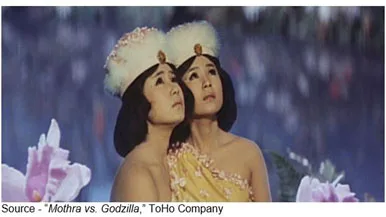 As news reporter Ichiro Sakai said, “We’re all human. As humans we are responsible for each other, we’re related. Refuse us then you’ll abandon your brothers. We must learn to help each other.”
As news reporter Ichiro Sakai said, “We’re all human. As humans we are responsible for each other, we’re related. Refuse us then you’ll abandon your brothers. We must learn to help each other.”
# # #